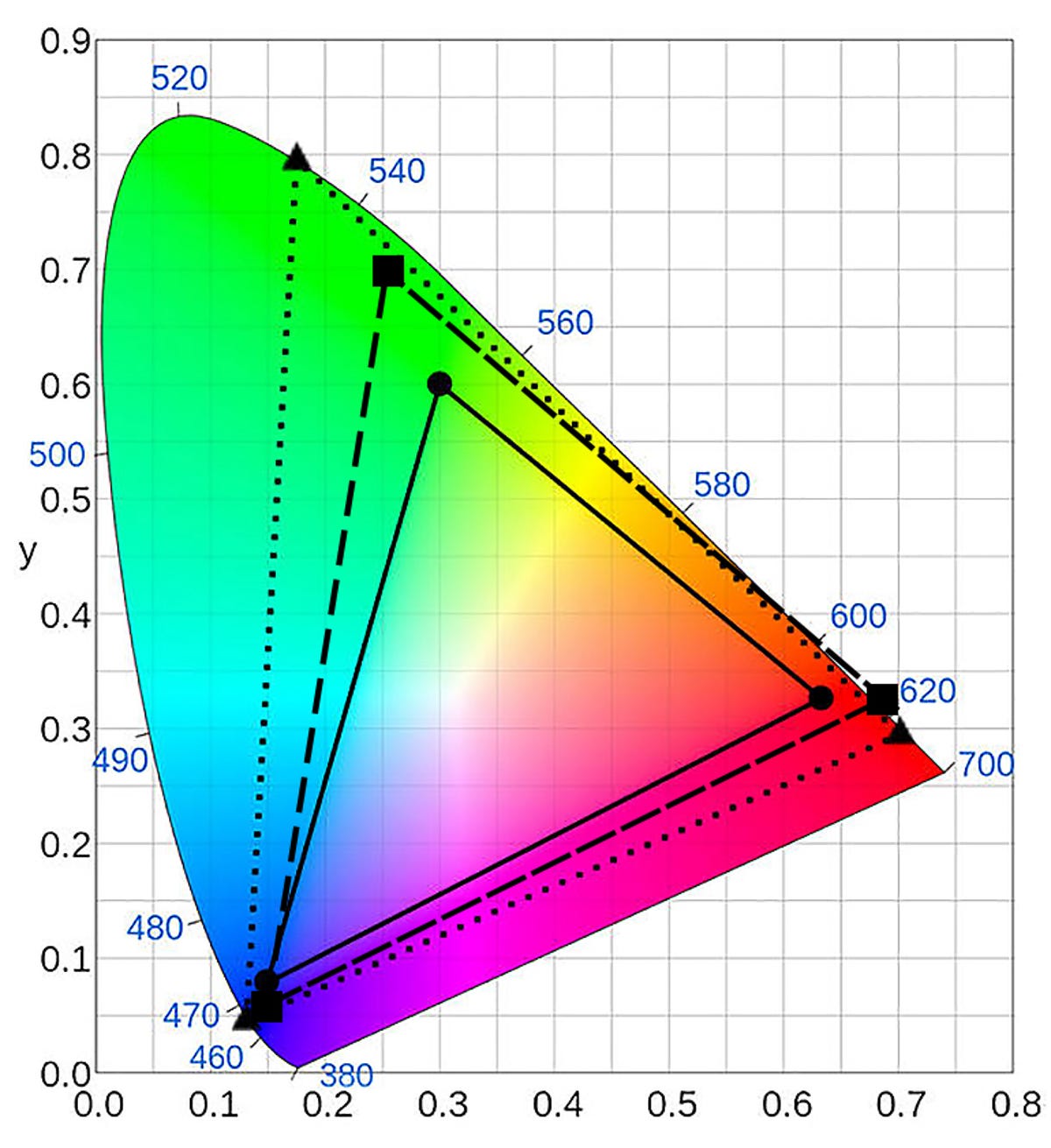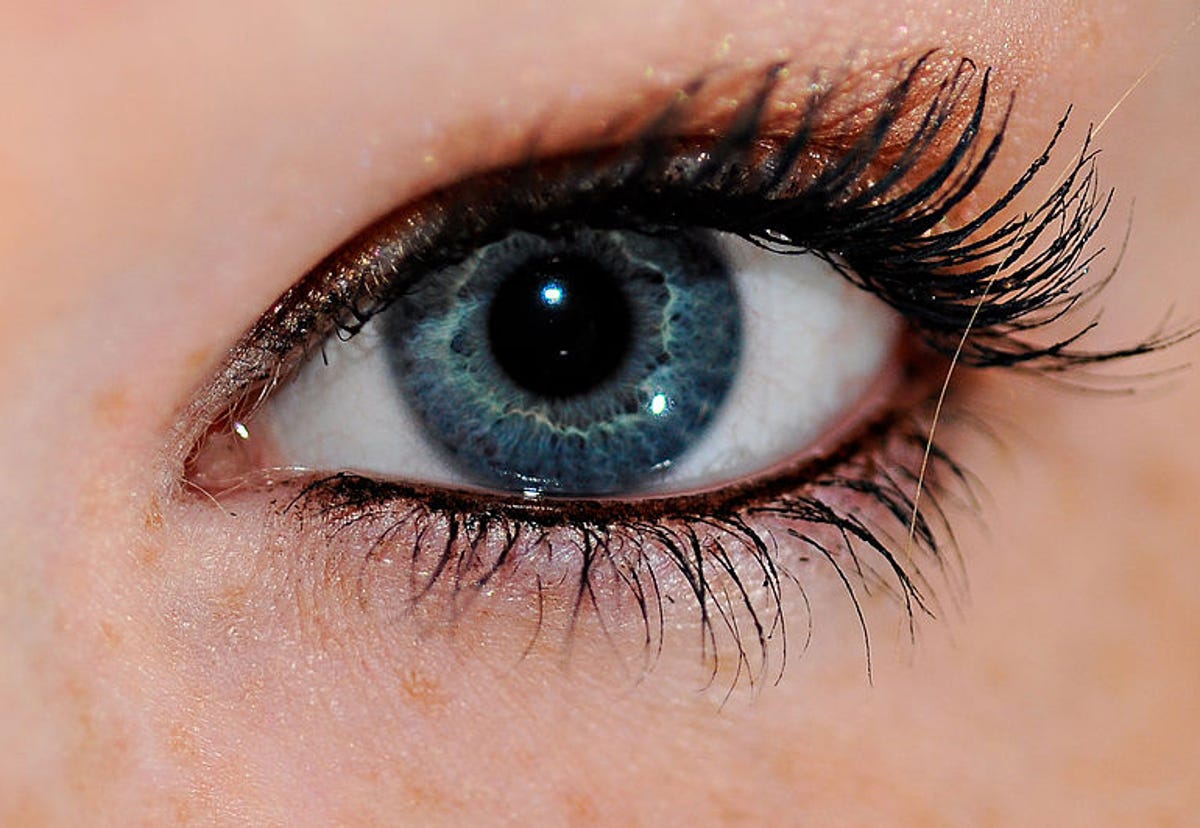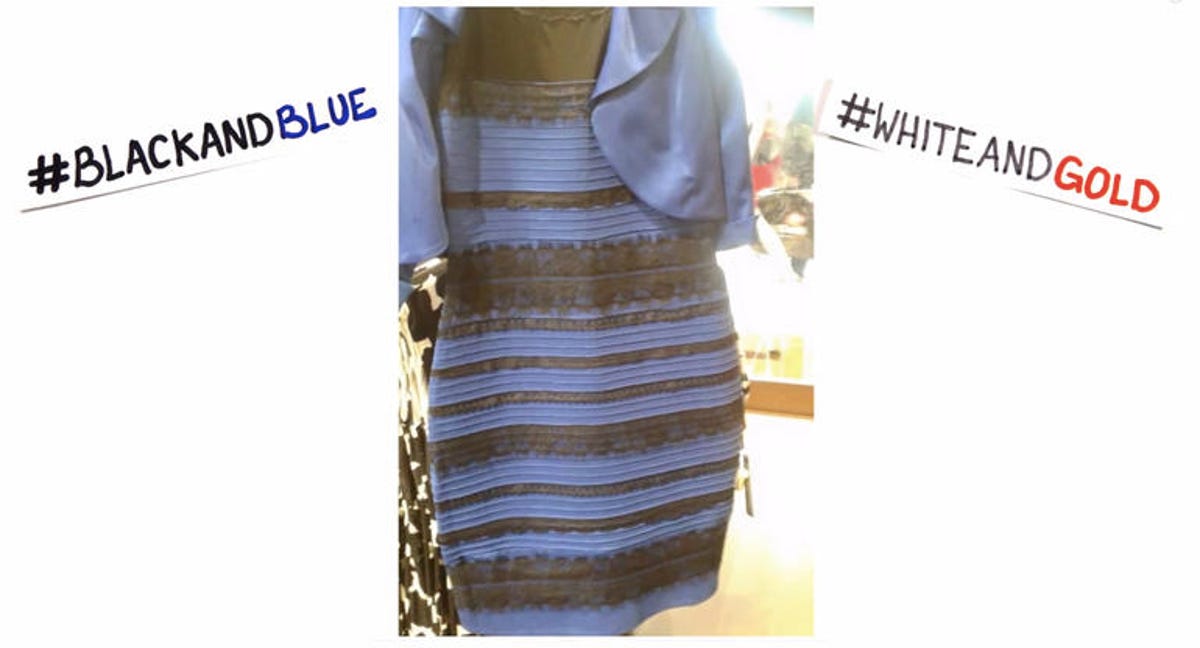
Geoffrey Morrison/CNET (triangles); Sakurambo (base chart)
One of the least appreciated, and frequently overlooked, aspects of a TV’s performance is the realism of its colors. The more accurate the colors, the more lifelike the picture.
Despite the advent of high-def, we’re still stuck with colors largely based on the limitations of CRT technology. Today’s televisions are technically capable of better color but are held back by the content and specifications of HD.
That’s all about to change. Upcoming color standards aim to improve color and bring it, finally, into the 21st century.
If you haven’t read through Part I of this article, I highly encourage you to do so. It covers the basics of how TVs create color today.
In this part, I’ll discuss how color is set to improve tomorrow. To get more realistic color, there are two aspects that must be improved: color gamut and bit depth. Let’s start with color gamut as it’s the easier to understand.
Color gamut
A TV (or TV signal’s) color gamut is all the color that’s possible for it to create. The greenest green, the bluest blue and the reddest red (and by extension, yellow, cyan, magenta, and so on). The easiest way to visualize this is with a triangle. Check out the image at the top of the page. Go ahead, I’ll wait.
The smallest triangle is the “Rec. 709” color space, also known as “HDTV.” Your eye can see colors far beyond what’s possible on today’s televisions (obviously). Two commonly used examples are the red of a fire truck (below) and the purple of an eggplant (aubergine). These can’t be accurately represented with Rec. 709.


Daniel Terdiman/CNET
Expanding the color gamut (making the triangle wider) lets your TV show those colors and many more. A “redder” red, so to speak. We’ll discuss them more later, but the two larger triangles (P3 and Rec. 2020) on the chart above represent the two main potential upcoming color gamuts. As you can see, they’re capable of including a lot more colors.
Bit depth
The other aspect is bit depth, which is a bit more complex to understand. TVs don’t have an infinite color palette to choose from. Being digital, each color has to be represented by a number. Current HDTV uses an 8-bit system. This means there are 256 shades possible for each color (it’s not quite that, but let’s not overcomplicate it).
So a blue of “20” is so dark as to be almost black (but still blue), and a “220” is a bright blue.
This may not seem like a lot or range, but it’s enough — it gives the potential of over 16.7 million colors (256 green x 256 blue x 256 red). Even with that many potential colors, you still have the possibility of banding (which is exactly what it sounds like: bands instead of smooth transitions of colors), and you can miss out on in-between shades.
What TVs (and 4K Blu-rays) are moving toward now is a 10-bit system. This means 1,024 shades per color. That means many more steps or “shades of gray” and access to over a billion colors.
Combine greater bit depth with greater color gamut and color realism takes a big leap.
By the way, 8-bit is also rather limiting in the amount of detail you can have, in terms of overall brightness, in any given shot. For more on that, check out High Dynamic Range Arrives.


Image by Garretttaggs55
And then there’s your eye
For years, I, as well as other TV reviewers , have discussed how TVs with RGB LEDs (or quantum dots) just had richer, more realistic color reproduction, even when objectively measuring the same color accuracy as other TVs.
One TV designer put it this way: RGB LEDs (and by extension, LEDs augmented by laser and QD), are like painting with better, purer paint. What he meant was this: sure, any paint will let you create an image, but you can get a more realistic image with better paint.
Turns out (not surprisingly), there’s a reason for this. The human eye (and brain) see pure colors as brighter. The more “pure” the red, the brighter it seems. So a wide-spectrum red, which is pretty typical on most TVs, won’t seem as bright as a more focused red, such as that from a laser, LED, or quantum dot. The result is a more realistic representation of the colors intended by the content creators.
However, there is a potential drawback. The more pure the wavelengths used, the more potential variation there is among the viewers. That’s the fascinating part. Because all our eyes are subtly and slightly different, the way we see these pure colors will vary, the purer they are.
In other words, on one future TV I might see a perfect red, exactly how I see an apple or a fire truck. You might see it as close to that, but not quite that realistic. We’re both right, as that’s how our eyes and brain see it.


Video screenshot by Anthony Domanico/CNET
It goes back to the hoopla about the white/gold/blue/black dress. We have no way of knowing how someone sees a particular color, and neither of us is wrong no matter what. It’s how we see it, and in that, it’s innately personal.
Does this mean that we might have TVs that get great reviews from one reviewer and bad reviews from another (an opinion echoed in stores and bars and homes around the country)? Perhaps. More likely, the TV manufacturers will figure out what that point is where nearly everyone sees “really good” color, avoiding going beyond so that a few see “amazing” color and others see “meh” color.
This is all pretty new territory for the TV world, so it will be interesting to see (pun intended) how it all plays out.
For more info, I talk about this further and have additional links in the Quantum Dot article.


Geoffrey Morrison/CNET
4K BD and streaming
The best part of this, and why it’s so much more likely to happen, is that the additional data can be on the disc (or in the feed), and still have legacy compatibility. No separate “Expanded Color” discs. Run a disc on a “normal” 4K TV, and it runs with Rec. 709. Run it on a TV with expanded color compatibility, and you get the expanded color.
In a way, it’s a lot like how color was implemented on the old black-and-white over-the-air broadcasts. The transmission was black and white, but the color data was included in a way that black-and-white TVs never saw it, but color TVs could strip it out, and rebuild it.
Rec. 2020 or DCI P3
One of the discussions going on right now is by how much the new standards will take us beyond what we have now. On one hand is Rec. 2020, which is way more color than the current Rec. 709. There’s some off-the-record comments that Rec. 2020 is a step too far, that current technology can’t really do it. That, to me, sounds like a good thing. Something to aim for.
What’s we’re likely to get is DCI P3. This is the color section of the Digital Cinema Initiative. In other words, it’s what you’re seeing in movie theaters. P3 is far more likely to be implemented than Rec. 2020, since P3 color is what the studios already have. They’re a lazy bunch and would rather give you what they’ve got than go back and remaster a bunch of old films (again). Also, any movie shot digitally in the past few years might have P3 (or less), and it certainly can’t have more since the camera didn’t capture it.
While P3 is more likely, there doesn’t seem to be a technical reason why both possibilities can’t exist. As in, P3 for now, Rec. 2020 later. Since it’s just changing what the extra data is on the disc, it would be like adding an additional or new soundtrack, not changing a format.
Why now; why it’s possible
Discussions of wider color gamuts are nothing new. A few years ago there was a span of about 10 minutes where a few people got excited about xvYCC, a way to incorporate wider colors gamuts into regular HDTV signals. It was used basically never.
Today is different. We have a new storage medium incoming, it’s easy to change streaming content, and everything is now digital. No more being hampered by component video. Adding new data to the huge pipe provided by HDMI 2.0 is relatively easy.
Making all the pieces provide and work with that signal certainly isn’t a walk in the park, but it’s easier now than it had been.
Bottom line
The beauty of these new color possibilities is that TV manufacturers are already starting to implement them. While not “easy,” like adding a new app or changing a remote, the technologies that make these expanded colors possible come with other benefits (like energy efficiency). The likelihood your next TV will have expanded color potential if you buy in the next year or so is pretty good. If you buy in the next several years, it’s quite high.
Presuming the content comes with the additional data, we should see a big improvement in color realism as soon as later this year. Well, for those few people with the TVs and 4K BDs that are capable of it.
After that, the sky’s a multicolored rainbow of loveliness.
Got a question for Geoff? First, check out all the other articles he’s written on topics like why all HDMI cables are the same, LED LCD vs. OLED, why 4K TVs aren’t worth it and more. Still have a question?Send him an email! He won’t tell you what TV to buy, but he might use your letter in a future article. You can also send him a message on Twitter @TechWriterGeoff or Google+.




